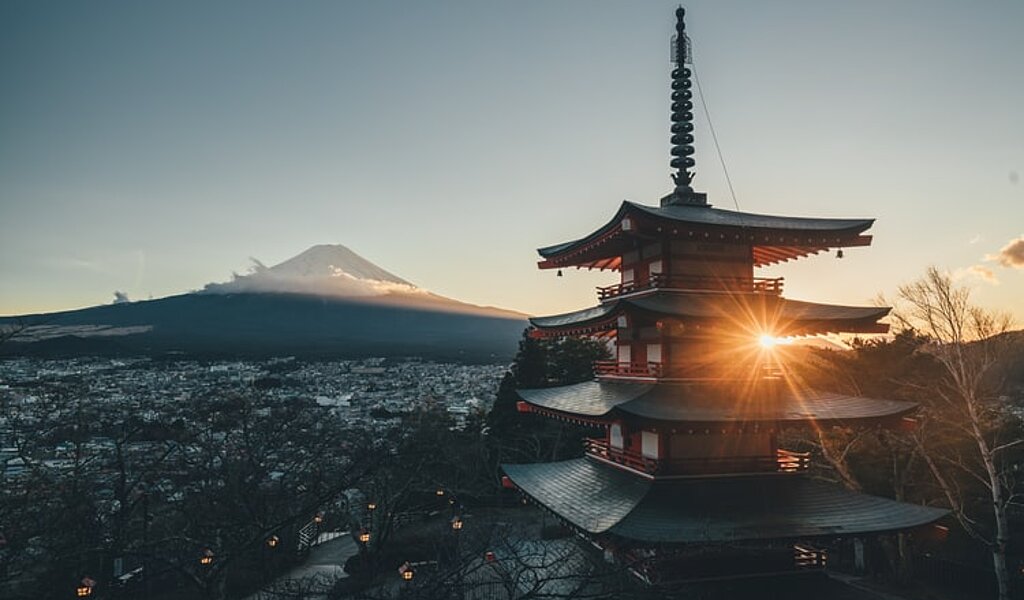

In our blog post"Tattoos in Japan" we have explained the topic of today's situation regarding the acceptance of tattoos in Japan in more detail. We also touched on the history behind it, which we would like to discuss in more depth today. We want to understand how it came to be that tattoos were so outlawed and even today may not enjoy much prestige within the country of the rising sun.
Jomon Age (7,500 - 300 BC)
The research begins with records and finds from the Jomon period (7,500 - 300 BC) Here, small and simple tattoos were also found, similar to Ötzi in areas of acupuncture and let scientists assume that tattoos at this time also served a medical or a spiritual purpose. However, scientists can unfortunately only refer to this assumption, as only a few records from this time exist and no accurate picture regarding the social significance could be reconstructed. Only records from the year 300 B.C. brought light into the darkness and helped researchers to better understand the Japanese tattoo culture within the age. The documents found come from Chinese visitors to Japan and report that tattoos were considered a status symbol there and also had a religious significance within the culture. However, due to the lack of evidence, it is not possible to say exactly when the change in symbolism occurred.
Nara Age (710 - 794 AD)
However, the image of the eternal art changed several times over the centuries. Where once they were a symbol of prosperity and wealth, they quickly took on a bad image. After a few years where the art of tattooing was held in high esteem, criminals and renegades were marked in this way. According to documents, this is thanks to the emperor who ruled the country in 720 AD. He decided to abolish the death penalty for the most part and made "clemency decisions" that recorded the use of tattoos as punishment. This legacy was passed down through generations for many years and shaped many centuries.
Edo period (1603 - 1868)
After many years of bloody unification of Japan, the peaceful Edo period began. At this time, today's Tokyo, formerly Edo, was appointed the capital and took most of the power from the then emperor, whose seat was still in Kyoto. The war was over and the citizens finally focused on the economic development of their country, which even Edo, initially a small port city to grow into a magnificent capital. With the development also came the renewed upswing within the tattoo culture. Due to the changes within the culture and also the art, tattoos gained more and more social interest. This was mainly due to the popular and at the time revolutionary woodblock prints of the age (ukiyo-e, "pictures of flowing time"). They were the illustrations in books of the time and were produced in large numbers, which also enabled ordinary citizens to buy such a book. This medium and the protagonist from the novel "Suikoden", who was tattooed on a large scale, were the reason that tattoos gained recognition again, creating the foundation of today's Japanese tattoo style and even becoming fashionable among the townspeople. For an entire age, tattoos enjoyed widespread prestige.
Meiji Age (1868 - 1912)
With the opening of trade, the Japanese government was afraid that the eternal art would meet with rejection from the outside. Nevertheless, criminals, such as the "Yakuza" did not comply with the regulation, which attracted the attention of foreigners. Contrary to these expectations, the tattoos were marveled at and inbound travelers quickly recognized their aesthetic, and the inbound travelers continued to wear them across Japan's borders. Western tattoo artists copied the style of the Japanese and combined it with their own styles, which were also passed on to Japanese tattoo artists. The current tattoo style from Japan was created.
Showa Age (1926 - 1989)
After tattoos were legalized again in 1948, the deceptive appearance from the Meiji era bore its fruit and was automatically associated with crime and the "Yakuza". The "Yakuza" are in other words the Japanese Mafia, whose history goes back many centuries (around 1600). They operate within rival groups and originally descended from the "Bakuto", gambling syndicates of the Edo period. As "Yakuza" wore large tattoos as a sign of affiliation, ostracism grew again towards the once revolutionary tattoos.







Kommentar schreiben
Kommentare
Keine Kommentare